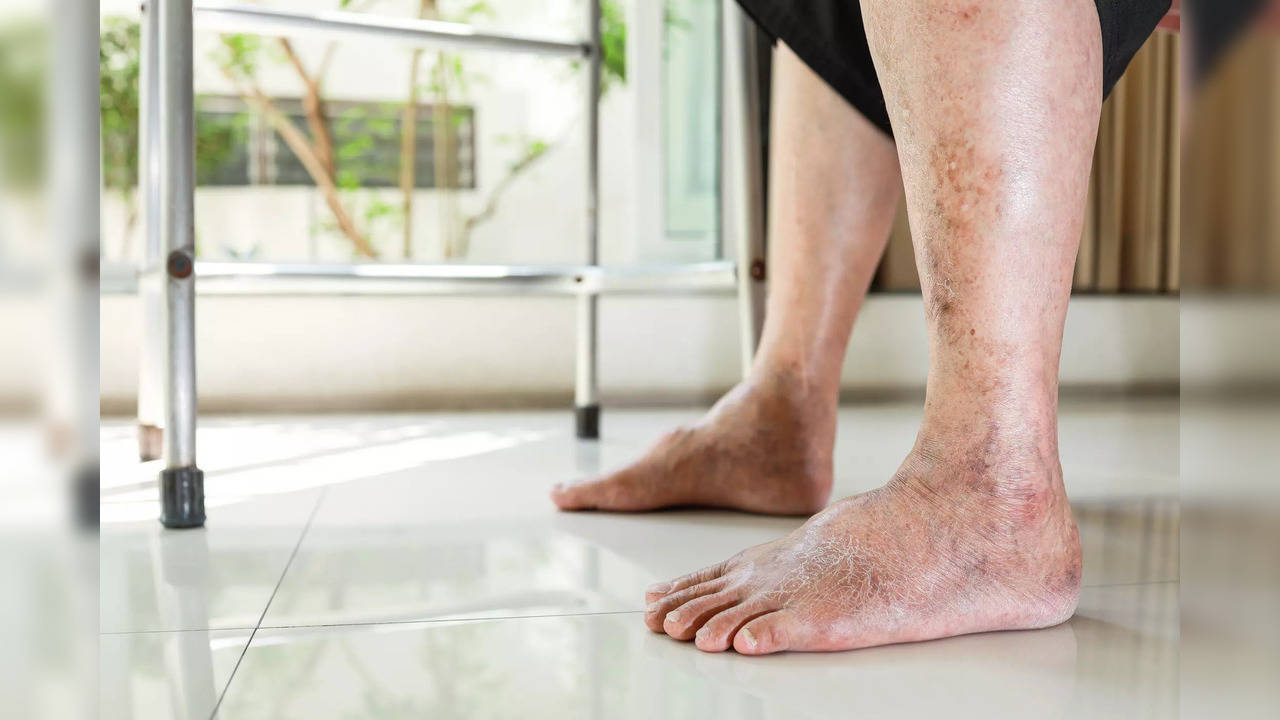High cholesterol: The colour of your legs could be a symptom
When high cholesterol obstructs the smooth flow of blood to the lower limbs, it can result in peripheral artery disease (PAD), a condition that can change the colour of the legs. One may notice the legs turn blue or pale and this can be accompanied by pain which worsens by walking and eases within a few minutes of rest.

A prick test or a blood test can help ascertain cholesterol levels. To
Photo : iStock
New Delhi: High cholesterol may appear like a condition that may not cause much trouble – but in truth, there are several health risks associated with it. From the risk of developing a blockage in the arteries to the consequent possibility of suffering a heart attack or a stroke – surging low-density lipoproteins (LDL) or bad cholesterol can backfire in several ways. And despite the absence of any symptoms, there are some signs that may appear on specific body parts to raise concerns.
High cholesterol is when excess fats in the blood start to accumulate to clog the arteries or make them narrow. If left untreated, it could result in atherosclerosis or may narrow down the arteries to obstruct the smooth flow of blood.
What are the symptoms of high cholesterol?
When high cholesterol obstructs the smooth flow of blood to the lower limbs, it can result in peripheral artery disease (PAD), a condition that can change the colour of the legs. One may notice the legs turn blue or pale and this can be accompanied by pain which worsens by walking and eases within a few minutes of rest.
Apart from this, The Mayo Clinic says that other signs of high cholesterol include:
- No pulse or weak pulse in the legs or feet
- Shiny skin on the legs
- Sores and ulcers on the feet that do not heal
- Numbness or weakness in the legs
- Slow growth of toenails
- Loss of hair or poor hair growth in the legs
- Erectile dysfunction
- Recurring pain while exercising
- Painful cramping in the thighs, calf muscles, or hips while climbing the stairs or walking
Detecting high cholesterol
A prick test or a blood test can help ascertain cholesterol levels. To manage it, doctors recommend abstaining from sodium, saturated, and trans fat sources like processed cheese, bacon, sausages, baked goods, and sugary products. Quit smoking and cut down on alcohol while eating the right foods such as fruits and vegetables, healthy fats like olive oil, nuts, and seeds; and get ample workout as well.
Disclaimer: Tips and suggestions mentioned in the article are for general information purposes only and should not be construed as professional medical advice. Always consult your doctor or a dietician before starting any fitness programme or making any changes to your diet.
Trending:
End of Article
Subscribe to our daily Lifestyle Newsletter!





Related News





Optical Illusion Personality Test: What You See First Can Reveal If You Are Preceptive Or Pragmatic

Study Finds Spending Time In Nature Can Lower Risk Of Heart Disease, Diabetes

IISc Bengaluru Develop Synthetic Compound That Can Help In Making Cancer Vaccine

Depression In Men: 7 Key Symptoms To Watch Out For

Should You Switch Your Fitness Routine Every Few Months? Know Here









